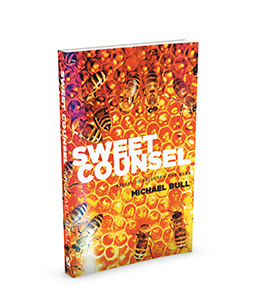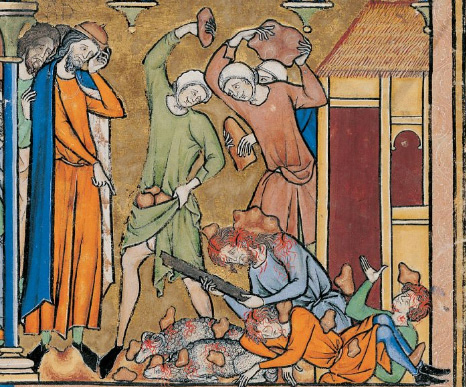House And Contents
For seizing the devoted plunder of Jericho, Achan was stoned to death and burned with fire, along with his children, livestock, and all his possessions. This judgment appears to contradict Deuteronomy 24:16, which forbids the punishment of children for the sins of their fathers.
It seems that the solution is architectural. Here’s an excerpt from the forthcoming Sweet Counsel:
. . . . .
Achan’s sin threatened the Covenant Oath taken by a new generation of Israelites and their possession of the promised inheritance. The golden tongue (Head) and Babylonian robe (Body) were false Word and stolen Government, with the rebellious Man unwilling to be the obedient Sacrament.
Tongue Lashing
The Lord’s intention in every case is that the Word from heaven might purify the Mediator (or priesthood), and that this Mediator/priesthood might then speak this Word to purify the nations.
WORD: angels, (Heaven) – Most Holy Place
SACRAMENT: Jews (Land) – Holy Place
GOVERNMENT: Gentiles (Sea) – Temple Courts
At the center of the Bible Matrix (Step 4), the fiery tongue of the Law executes the Sanctions upon Israel and purifies her, as we see in the book of Numbers.
At Step 6, it is the fiery tongues of the newly-purified, newly robed (baptized) members of Israel executing the Sanctions upon the nations, as we see in the book of Joshua. As with all prophets, all mediators, Israel gets tongue-lashed in the wilderness, then Israel becomes the tongue-lasher in the Land. [1]
 This explains the apparent contradiction between the judicial stoning of Achan, his family and his livestock, and Deuteronomy 24:16, which prohibited the execution of Israel’s children for the sins of their fathers. Achan’s punishment was an echo of the ban upon the first city of the Gentiles rather than the Covenant Sanctions upon Israel. He was not being “tongue-lashed” as an Israelite but as a Gentile. He had not coveted his neighbor’s house and contents (Exodus 20:17), but that which belonged to God (Joshua 22:20). [2] He was condemned as a Canaanite, but also as part of Jericho, the “Firstfruits” of the Land, a whole burnt (ascension) offering in which “all flesh” was cut off.
This explains the apparent contradiction between the judicial stoning of Achan, his family and his livestock, and Deuteronomy 24:16, which prohibited the execution of Israel’s children for the sins of their fathers. Achan’s punishment was an echo of the ban upon the first city of the Gentiles rather than the Covenant Sanctions upon Israel. He was not being “tongue-lashed” as an Israelite but as a Gentile. He had not coveted his neighbor’s house and contents (Exodus 20:17), but that which belonged to God (Joshua 22:20). [2] He was condemned as a Canaanite, but also as part of Jericho, the “Firstfruits” of the Land, a whole burnt (ascension) offering in which “all flesh” was cut off.
ADAM
WORD: God (Father)
SACRAMENT: Man images God (Son)
GOVERNMENT: Animals submit to Man (Spirit)
ACHAN
WORD: Achan as his own “captain” (tongue and robe)
SACRAMENT: Achan’s offspring in the Land
GOVERNMENT: Achan’s livestock as wild beasts
Through unbelief, Achan put his entire house outside of Israel and under the ban. Through faith, Rahab saved everyone in her house, an event which resembled Israel’s Passover. The house of Achan bore the judgment of the house of Rahab, and was buried under a pile of stones.
These two houses represented two brothers, Perez and Zerah, the sons which Tamar bore to Judah. Rahab married into the Messianic line of Perez, and the cutting off of Achan’s family ended the line of Zerah.
_________________________________________
[1] See Bible Matrix II: The Covenant Key, 195, for a diagram which demonstrates how the fivefold Torah relates to the sevenfold Dominion pattern.
[2] In the Ten Words, the commands against theft and false witness (the sins of Achan) are followed by the two commands against coveting (house and contents), which together align with the Feast of Booths (ministry to the Gentiles), and the Covenant Succession of Israel. See Bible Matrix II: The Covenant Key, 63. and also The Guild of Thieves.
[3] This reversal resembles the twofold “blessing and cursing” of Jericho and Israel by Elisha, and also the reversal of the fates of Naaman and Gehazi.
ART: Joshua, Achan Stoned, Maciejowski Bible (illuminated manuscript).


























